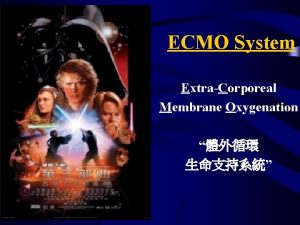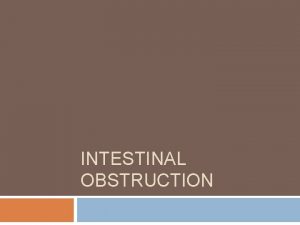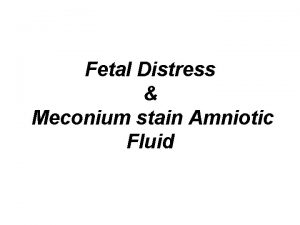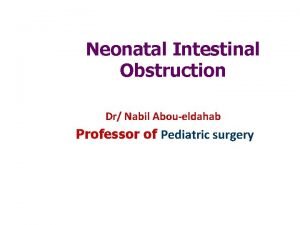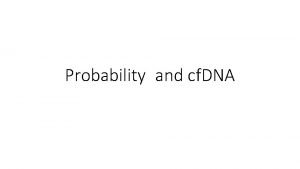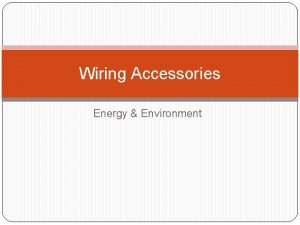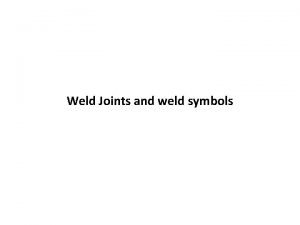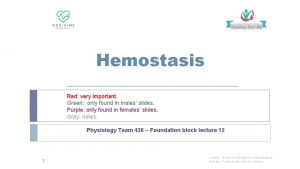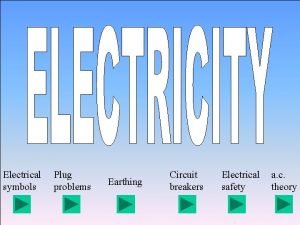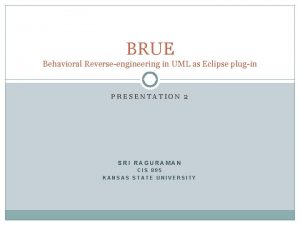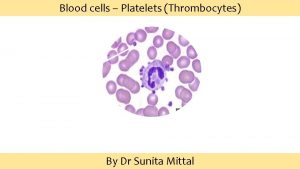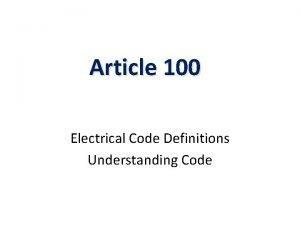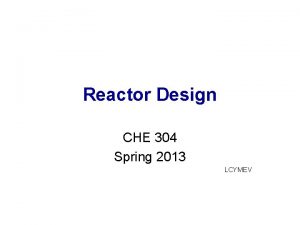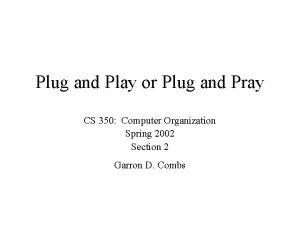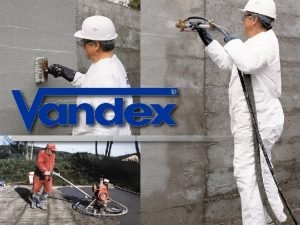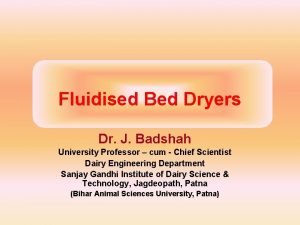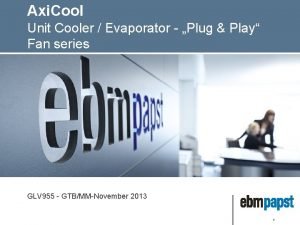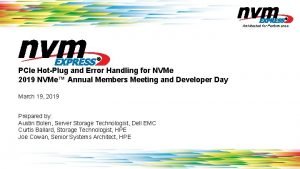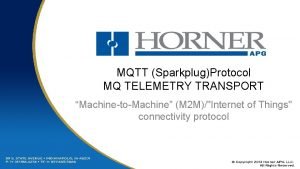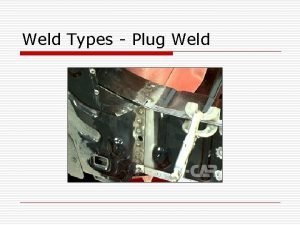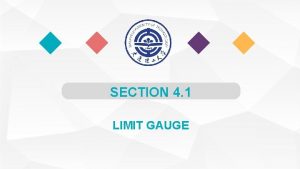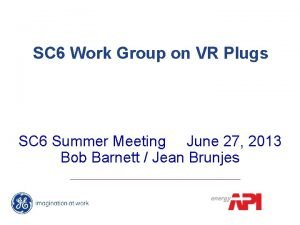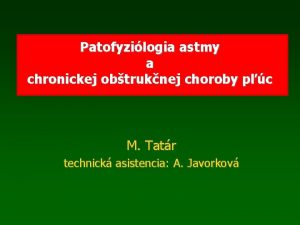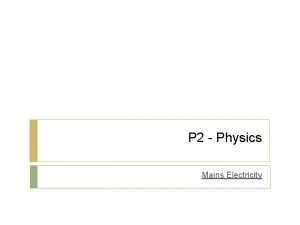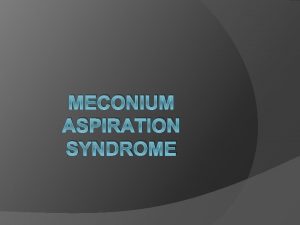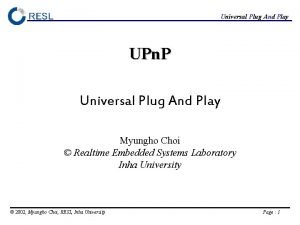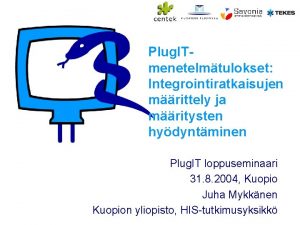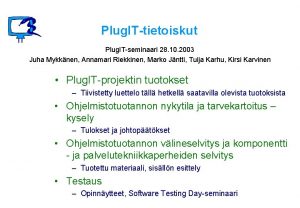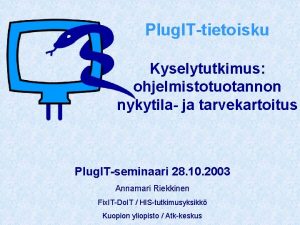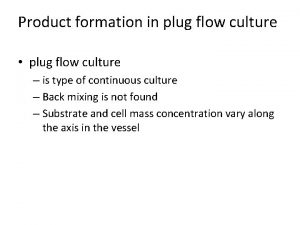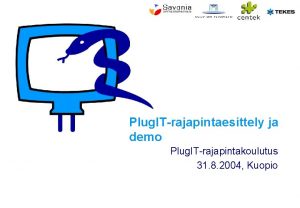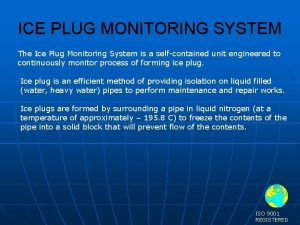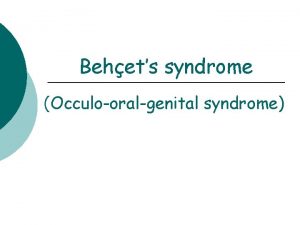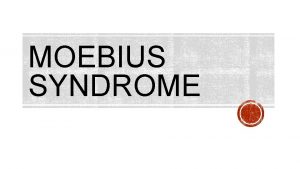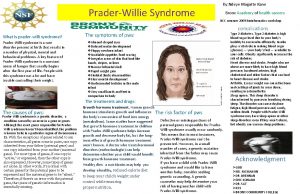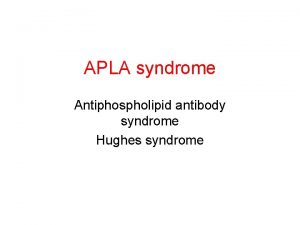Meconium plug syndrome Definition clinical picture is a











































- Slides: 43

Meconium plug syndrome

Definition & clinical picture • is a transient disorder of the newborn colon characterized by delayed passage (>24 -48 h) of meconium and intestinal dilatation. • Abdominal distention

Investigation • Plain film multiple dilated bowel loops • contrast enema 1. small calibre to the left colon 2. multiple filling defects due to retained meconium. 3. transition zone between at the splenic flexure. 4. The enema can be both diagnostic as well as therapeutic & usually accompanied by passage of meconium during the procedure.


Hirschsprung’s Disease

Pathology Functional intestinal obstruction resulting from the congenital absence of myenteric (Auerbach’s) plexus and the submucosal Meissner’s plexus

Types • Affects the rectum and sigmoid (70%) • Other cases affect long portion of colon and can with total colonic aganglionic in 8– 10%

Clinical pictures 1. delayed passage of meconium for more than 24 hours is the cardinal symptom 2. Constipation 3. Marked abdominal distension 4. Vomiting 5. Picture of enterocolitis as diarrhoea. ( the commonest cause of death)

Radiological investigation Barium enema Requirement: infant should not have rectal washouts or even digital examinations prior to barium enema, as it may distort the transitional zone appearance and give a false-negative diagnosis.

Radiological investigation Finding Barium enema • stenosed aganglionic segment, • Followed by funnel segment (Transitional zone) • Then dilated bowel.

Instrumental investigation Biopsy The most used is suction biopsy: • Acetylcholinesterase (ACh. E) staining techniques show an increased activity in the parasympathetic nerves of the affected zone

Other investigation Manometry • In normal people, distention of the rectum results in the reflex relaxation of the internal sphincter • This is absent in patients with Hirschsprung’s disease.

Treatment • Recently most of cases diagnosed in neonate • So now performing one-stage pull-through operations in the newborn with minimal morbidity • The advantages are 1. colonic dilatation can be quickly controlled by washouts 2. the calibre of the pull-through bowel is near normal, allowing for an accurate anastomosis

Treatment • Recently, one-stage pull-through with laparoscopic techniques. • More recently, a transanal endorectal pullthrough operation performed without opening the abdomen has been used with excellent results in rectosigmoid type










Operations • Swenson Procedure Resection of the aganglionic segment deep into the pelvis and direct end to- end anastomosis of the proximal colon to the anorectal canal. • Duhamel Procedure Aganglionic rectum is retained and the ganglionated bowel brought posteriorly and anastomosed to the aganglionic remnant in a side-to side

Operations Soave Procedure • The Soave with its variations, is the most frequently performed procedure in the world • It involves an extramucosal resection of a retained • aganglionic rectal segment. • The rectal mucosa is removed and a muscular cuff retained. • The ganglionated colon is brought through this cuff and anastomosed to the dentate line in the rectum, • Its variant is laparscopic assisted and endorectal pull through

Anorectal Malformations

Incidence & associated anomalies • Incidence: 1 in 4, 500 • SEX: 60% male • Associated anomalies VACTREL syndrome 1. 2. 3. 4. 5. 6. Vertberal Cardiac Tracheal Renal Esophageal Limb

Classifications • Old classification : Low abnormalities Termination of bowel below the pelvic floor 1)Covered anus 2)Ectopic anus 3)Stenosed anus 4)Membranous stenosis High abnormalities Termination of bowel above the pelvic floor

Recent classification Male Anatomic type Female • Perianal fistula • Rectourethral fistula ( common) 1. Bulblar 2. Prostatic • Recto-vestibular fistula • Recto-vesical fistula(bladder – neck) • Persistent cloaca 1. < 3 cm common channel 2. >3 cm common channel • Imperforate anus without fistula • Rectal atresia • Complex type • Rectal atresia

Perianal fistula in male Bucket handle associated with fistula



Clinical presentation • Failure to pass meconium within the 1 st 24 hours of life. • Inspection 1. Presence of meconium. • If meconium is seen on the perineum�perineal fistula. • If there is meconium in the urine � rectourinary fistula. 2. For presence of anal dimple 3. Development of muscle & sacrum

Investigations • Plain X ray : either invertogram or cross table lateral form done after 24 hours

Investigation • For evaluation of associated anomalies 1. Echocardiography 2. Kidney U/S

Treatment

Newborn male Perineal inspection & evaluation of associated anomalies , then plain X ray Perineal Fistula Anoplasty Rectal gas below coccyx No associated defects Consider PSARP with or without colostomy Rectal gas above coccyx Associated defects Abnormal Sacrum Flat Bottom Colostomy

Newborn Female Perineal inspection & evaluation of associated anomalies , then plain X ray Single perineal orifice ( Cloaca ) Perineal Fistula Anoplasty or Dilatations Colostomy Drain hydrocolpos Urinary Diversion (if necessary) Vestibular Fistula Colostomy or primary repair No visible fistula Rectum below coccyx Colostomy or primary repair Rectum above coccyx Colostomy

Necrotizing enterocolitis

Incidence • It is a serious disease, that mainly affects premature babies under sever distress

Pathology & X ray 1. It is commonly affects ileum and Rt. colon 2. Ischemic mucosal change with invasion of wall by bacteria 3. Pneumatosis (air within intestinal wall) occurs gangrene & perforation of the intestine

Treatment • • Drain, patch & wait Resects gangrenous bowel Avoid massive resections Exteriorize bowel

• Thanks
 Postpneumonectomy syndrome
Postpneumonectomy syndrome Closed loop small bowel obstruction
Closed loop small bowel obstruction Meconium staining
Meconium staining Meconium aspiration treatment
Meconium aspiration treatment Meconium
Meconium Hirschsprung disease
Hirschsprung disease Down syndrome ultrasound vs normal
Down syndrome ultrasound vs normal Picture 1 picture 2
Picture 1 picture 2 Electrical installation accessories
Electrical installation accessories Bevel joint welding
Bevel joint welding Type of welded joint
Type of welded joint Tools materials needed
Tools materials needed Features of greenstone digital library software
Features of greenstone digital library software Wet plug socket
Wet plug socket Radio plug script sample
Radio plug script sample Hemostasis
Hemostasis Process of platelet plug formation
Process of platelet plug formation Circuit breaker electrical symbol
Circuit breaker electrical symbol Converting prius to plug in
Converting prius to plug in Torches
Torches Brue plug
Brue plug Uml diagram eclipse plugin
Uml diagram eclipse plugin Site:slidetodoc.com
Site:slidetodoc.com Bilinogojstvo
Bilinogojstvo Multi wire branch circuit
Multi wire branch circuit Bot plug
Bot plug Reactor
Reactor How does plug and play work
How does plug and play work Broken heat exchanger
Broken heat exchanger Vandex plug
Vandex plug Plug flow dryer is variant of
Plug flow dryer is variant of Plug and play fan
Plug and play fan Pcie error handling
Pcie error handling Spark plug mqtt
Spark plug mqtt Plug and play manager in kernel
Plug and play manager in kernel Plug weld
Plug weld Limit gauge
Limit gauge Plug figure in pro forma projections
Plug figure in pro forma projections Plug working group
Plug working group Plug & play
Plug & play Plug mucus
Plug mucus Plug wires diagram
Plug wires diagram Plug & play
Plug & play What is the primary goal of a plug-in?
What is the primary goal of a plug-in?
